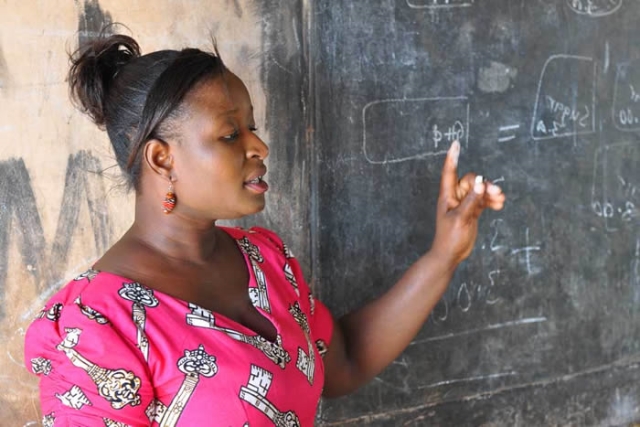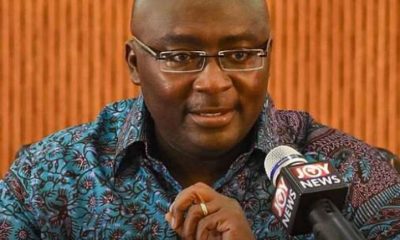Gossip
Ghana’s education architecture – Developing a Systems Approach
In a series of commentaries on Ghana’s ongoing education reforms, I will share my thoughts and expectations. I will draw on my experience as an education professional with experience of teaching all age groups – 0 – 60+, education management, education research and as a school governor supporting my school and a partnership of eight schools with strategic input and challenge.
I will begin by considering the benefits of adopting a systems approach to resolving Ghana’s human capital development challenges. Following that, I will focus on early years as foundational to life-long skills, primary education as a cornerstone, secondary education as building blocks of academic and applied learning, leadership and management of education and finally financing for education.
Having begun my foray into education some 8 years ago as a project manager of an early years project in a disadvantaged community with hard to reach families in east London, working with 16- 19-year-olds in a comprehensive sixth-form, working in an educational charity that places teaching leaders in disadvantaged schools, researching school leadership and management in schools in Estonia and England – a single theme runs through People rise to meet expectations set for them – high or low.
A school system is not greater than the confidence placed in it to deliver outcomes nor is a school system able to operate beyond a vision – local or national.
In designing a curriculum for the 21st century and beyond, Ghana must first decide the future she wants and the role she wants to play in that future. Ghana must decide the knowledge, skills, competencies and aptitudes that will enable her function optimally and begin to design an ecosystem that facilitates the cross-pollination and growth necessary.
To function in the global economy, Ghanaians must be skilled to collaborate, compete and connect using the universal language. The language of the future is not limited to spoken language, neither is spoken the language – however, it is fundamental to this shift — it is knowledge and skills.
The future is not what we used to know; it is a future we do not know; preparing for this future cannot be business as usual. What is clear? It requires bold ambition. It requires co-creation and mastery – the pivot at the heart of civilisations; a focus we have departed from – a principle we must return to.
How do you build for the unknown?
Churchman’s analogy of blind men trying to describe an elephant from their experience is everything a systems approach is not. A systems approach is the total view and experience of the whole elephant. Thus, the educational experience ought to wholly align with the vision of the 21stcentury Ghana and Ghanaian.
A system driven audit of the educational experience will begin from a comprehensive count of the knowns – i.e. an audit of our human capital – understand the demography of the population, for example, population under 60 (retirement age) without education, population with basic education, JSS/JHS, WASSCE, vocational and technical, informal learning experiences or informal apprentices and tertiary, advanced and professional qualifications.
This way, a Gestalt view is gained of the human capital. Drawing from this, planners are better able to deduct on a sort of education and economic balance sheet, costs and benefits of the stock of human capital. Deductions can also be made on how investment in education can move the economic lever to the left or right of zero. Models can be built to gain understand immediate and long-term benefits of targeted investments. For example, the debate on the Free Senior School Education modelled in the education and economic balance sheet might paint a much clearer picture to proponents and opponents alike.
According to data from Trading Economics, a portal thatprovides 20 million economic indicators on 196 countries, delivers insights on the demography without education, the breakdown is as follows;
Percentage of population age 15-19 with no education – 11.06%
Percentage of population age 20-24 with no education – 23.55%
Percentage of population age 25-29 with no education – 23.53%
Percentage of population age 30-34 with no education – 28.53%
Percentage of population age 35-39 with no education – 33.03%
Percentage of population age 40-44 with no education -35.33%
Percentage of population age 50-54% with no education -35.73%
Percentage of population age 55-59 with no education – 41.45%
To fully understand the scale of the challenge, note the overall population size of these demographic groups below:
Population in thousands of 15+ –2,667,000 (11.06% = 294,970.2)
Population in thousands of 20-24 – 2,549,000 (23.55% = 599,779.7)
Pop in thousands of 25 – 29 – 2,155,00 (23.53% = 507,071.5)
Population in thousands of 30-34 – 1,708,000 (28.53% = 487,292.4)
Population in thousands of 35-39 – 1,392,000 (33.03% =459,777.6)
Population in thousands of 40-44 – 1,111,000 (35.33% = 392,516.3)
Populations in thousands of 50-54 – 780,000 (35.73% = 278,694)
Population in thousands of 55-59 – 632,000 (41.45% = 261.964)
Total population with no education – 3,282,065.7 or 11.72%of the total 15-59 group or working population.
“The vision of Ghana is to transform its economy and society into a stable, united, inclusive and prosperous country with opportunities for all (Government of Ghana – GoG, 2014a). NDPC, envisage that there will be increased access to quality education and health services at all levels; and that science, technology and innovation (STI) will drive education and national development (GoG, 2014b).
Judging by the anticipated growth, how might the 1 in 10 without education be able to access the opportunities, function in an increasingly digital economy and achieve productivity anticipated on the back of economic growth? Judging from Ghana’s 140th position on the United Nations Human Development Index (measures the capabilities of a population in the development of a nation), it is safe to say significant attempts must be made to achieve the twin growth of human and economic development.
Leaving no one behind – education and economic planners must anticipate the impact of the 1 in 10 uneducated Ghanaians on the lives of the 0-15 age group whose parents they are.
Developing a pipeline of children with an excellent education is imperative. Drilling deep, education provided to children since 2005 has been half of less than good – as according to researchers and authors of the National Assessments in Education of children “All four subject-area components (P4 mathematics, P4 English, P6 mathematics and P6 English) used reached the same test score cut-points to indicate that a pupil had achieved the minimum competency level and the proficiency level.
These cut-points were established by the GES in 2005. Pupils who scored 35% correct were defined as having reached minimum competency and pupils scoring 55% or better were defined as having proficiency.” Cautionary note: “The authors wish to note that international standards for ‘proficiency’ are generally set at a higher cut-point. That is, a more common requirement for ‘proficiency’ is to correctly answer at least 70% of the questions correctly.
The NEA’s criterion for ‘proficiency’, reported here, was established in 2005 with the first NEA, and is based on answering just over half of the items correctly (i.e., ≤ 55%) and thus does not effectively identify pupils who have a full grasp of the curriculum – that is, who are truly proficient in the subject area.” (Ministry of Education, Ghana, 2016).
The findings further indicate “that primary school pupils were challenged by both English and mathematics, with no more than 37% of pupils achieving proficiency levels in any grade or subject. Performance was noticeably lower for mathematics than for English, with only 22% of P6 pupils and 25% of P6 pupils achieving proficiency in mathematics compared to 37% of P4 pupils and 36% of P6 pupils achieving proficiency in English.
It is also important to highlight that for both grades and for English and mathematics, at least 29% of the pupils failed to correctly answer 35% of the questions correctly, the cut-point for minimum competency. That is, 29% of the P4 English pupils and P6 mathematics pupils, 30% of P6 English pupils, and 45% of P4 mathematics pupils performed below the minimum competency level.”
Considering these results are grim, divide them further into two to gain a more realistic picture of the true state of proficiency of many of our children. With such proficiency levels, is it safe to claim that over 75% of our population is literate? With parents being the first educators of their children, how equipped will the children of the uneducated and partly educated be able to achieve when their education is less than half as good compared with children from other parts of the world?
Adopting a systems approach will require intentional and deliberate planning to understand social mobility and barriers that hinder transitioning through the socio-economic ladder and remedial actions to reverse the cycle of poverty and disadvantage. It will require a complete design of the educational architecture as we currently know it. It must be bold and ambitious in uprooting cycles of generational disadvantage and poverty.
For Ghana, this should mean realigning and benchmarking competency and proficiency frameworks to global standards, building from the ground up educational experiences that are responsive and proactive.
This must be a nation that ensures that all its young people achieve the basic minimum level of competency with other young people across the world, so Ghana can stand a chance of her GDP growing at a rate of 674%.
This must be a nation that commits to a literate, numerate, digital, civic literate adult below 55 years – achieving an agile and proactive society where everyone truly thrives no matter your age or entry point.
Reforms must be transformative – a departure from the sum of the parts to the whole – its linkages and dependencies, thereby, reflecting our grasp of the complex system that needs structure and form to birth the new Ghanaian – confident master who is competent, co-creates and competes on the global stage. Poverty must not be destiny.
















